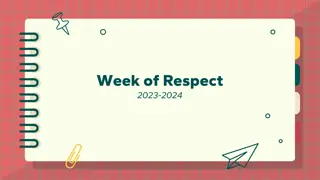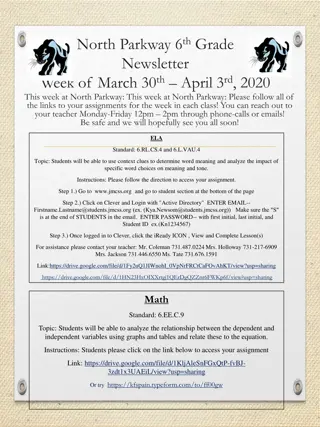
Learn Python: Selection Statements and Random Library
Explore the basics of Python programming with a focus on selection statements and the random library. Understand how if-else constructs work and how to handle mutually exclusive conditions using elif statements. Discover how to generate random numbers using Python's random library functions like randint() and random().
Download Presentation

Please find below an Image/Link to download the presentation.
The content on the website is provided AS IS for your information and personal use only. It may not be sold, licensed, or shared on other websites without obtaining consent from the author. If you encounter any issues during the download, it is possible that the publisher has removed the file from their server.
You are allowed to download the files provided on this website for personal or commercial use, subject to the condition that they are used lawfully. All files are the property of their respective owners.
The content on the website is provided AS IS for your information and personal use only. It may not be sold, licensed, or shared on other websites without obtaining consent from the author.
E N D
Presentation Transcript
What did we talk about last time? Selection statements (if) random library Monte Carlo approximation
Sometimes you have to make a decision If a condition is true, you go one way, if not, you go the other For example: If I win the lottery, I'll buy a Lamborghini Otherwise, I'll cry myself to sleep
Note the nature of this kind of condition Both outcomes cannot happen Either you buy a Lamborghini or cry yourself to sleep, never both For these situations, we use the else construct
if condition : A statements else : B statements Two different outcomes
if balance < 0: print('You are in debt!') else: print('You have $' + str(balance))
What if you have a list of mutually exclusive conditions? You can tie all the possibilities together starting with if, then for each additional condition, you use elif to check it, and then you can optionally end with an else if none of the other conditions were met if index == 1: print('First') elif index == 2: print('Second') elif index == 3: print('Third') else: print(str(index) + "th")
The random library lets us produce random numbers It has two functions that will be useful to us: randint(a, b): Returns a random integer n where a n b random(): Returns a random floating-point value from [0, 1) To use them, import random and then call the functions qualified by random followed by a period: import random dice = random.randint(1, 6) percentage = random.random()
We can do something called a Monte Carlo approximation of We "throw" darts at a 1 x 1 square in the upper right corner of a circle with radius 1 We count the ones that fall inside the circle and divide by the total darts thrown That fraction is an estimation of the area of one fourth of the circle By multiplying by 4, we approximate y x
Here is a function that performs the Monte Carlo approximation: import random def monteCarlo(darts): hits = 0 for i in range(darts): x = random.random() y = random.random() if x*x + y*y <= 1.0: # see if dart is in circle hits += 1 return 4.0 * hits / darts
We can use the turtle package to draw the darts that we "throw" when doing the Monte Carlo approximation We need to do two things: Scale the screen so that it's the right size for the dots we're drawing We want the screen to go from (0, 0) up to (1, 1) Draw a blue dot when the dart is in the circle and a red dot when it's not (o, 1) (o, 0) (1, 0)
How far do the coordinates stretch on the normal turtle screen? Who knows?! However, we can get the screen with the following command (as long as we already imported turtle) screen = turtle.Screen() Then, we can set the minimum x, minimum y, maximum x, and maximum y with the setworldcoordinates() method screen.setworldcoordinates(0, 0, 1, 1) #(0,0) to (1,1)
To draw a dot at a location, use the goto() method followed by the dot() method Assuming you have a turtle object named yertle: yertle.goto(x, y) yertle.dot() Before drawing a dot, you can set the color to draw by calling the color() method with a color: yertle.color('blue') Before drawing dots, put the turtle's tail up with the up() method so that it doesn't draw lines everywhere
Strings Concatenation Repetition Indexing Slicing Searching
20 employers in the fields of Engineering and Computer Science 20 alumni members attending Free professional LinkedIn headshots Plenty of food and great conversations Build new connections on LinkedIn Door prizes Network with people in your field Learn about possible internships Gain new insights about your major Required event for all sophomores
Read Section 3.2 of the textbook Finish Assignment 1 Due tonight by midnight! Work on Assignment 2 Due next Friday by midnight






















